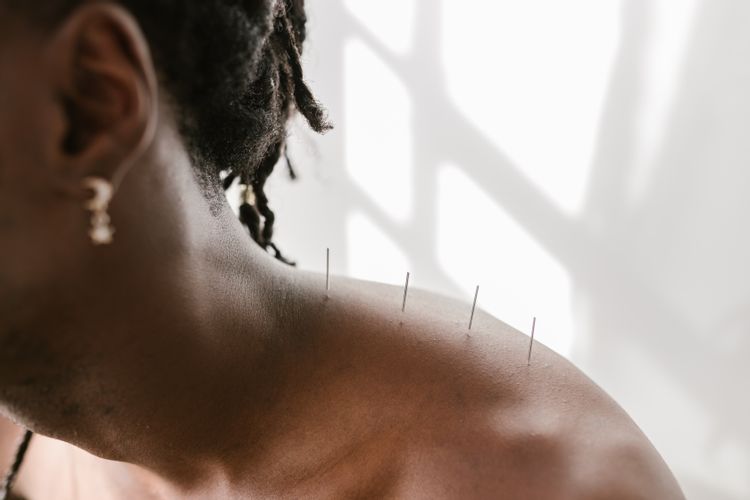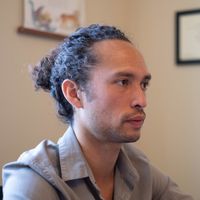Synopsis
- There are multiple types of acupuncture channels existing at different levels within the body.
- Acupuncture channels are more accurately thought of as networks, with each type of channel intersecting with the whole in particular ways.
- There are five major types of channels that allow the movement of three types of Qi.
- Each of these types of channels is associated with particular physical tissue structures.
Acupuncture Channels in Western Science
In western thought the most important question is typically "what is it?" This question has been asked of acupuncture channels since the West first became aware of them. Various ideas and theories have come out to explain the physical basis for channels, to try and tie them into western anatomical structures. In Defining Meridians: A Modern Basis of Understanding, John Longhurst lists a number of current theories.1
These include the primo-vascular system, tendinomuscular (or fascial) structures, skin resistance, and simply the nervous system.
However, all of these theories miss something. The fact is that there are multiple different types of channels that are considered to exist at different levels of the body, and most of these theories are looking at only one level, the level of the primary channels. In fact, not including cutaneous regions, there are five different types of channels.
Another aspect to remember is that the channel system is a network that necessarily encompasses the entire body. They are not simply routes within the body, they penetrate and are interwoven throughout the whole thing. So, it only makes sense that there are different types of channels, just as there are different types of tissues and structures at the level of physical anatomy.
Defining Channels in Chinese Medicine
The Chinese term for acupuncture channels is jing luo. Jing originally meant the warp threads in weaving, which are placed vertically on the loom; this character evolved to include the meaning of being the basic framework, or guiding principle, for a particular idea or concept. The second character means web, or network. Together they signify a network or web which creates the basic framework for the movement of Qi and Blood in the body. Note that the character for vessel - that is used for blood vessels - is mai. This is the same character that is used to indicate the pulse that can be felt on the surface of the body, and refers to a particular channel, not to the whole network.
Types of Channels
Different kinds of Qi flow in the various types of channels. There are three basic types: Wei Qi, Ying Qi, and Yuan Qi.
Wei Qi
Wei Qi is known as defensive qi. It is said to flow outside the vessels, circulating around the outer parts of the body during the day and then going inwards at night. Wei Qi is the most superficial form of Qi and is called defensive because it is the first to intercept any form of pathogen that comes from the outside. Wei Qi is generally considered to be produced from the Spleen organ system by incorporating the nourishment gained from food.
Wei Qi flows in the sinew channels. Also known as the tendinomuscular channels, these are broad bands that correspond well to the fascial planes in the body. Connective tissue, or fascia, is present throughout the body and binds everything together, down to the cellular level. It is capable of diverse functions, including communication. Wei Qi, as it exists within the fascial network, flows outside of the various vessels that carry liquid within the body, such as the arteries, veins, and lymph channels. Yet, because fascia interpenetrates every single cell, Wei Qi is able to reach the entirety of the body. To read a more in-depth examination of this fascial system from a western perspective, see Fascia as a body-wide communication system. 2
Ying Qi
Ying Qi is known as nutritive qi. It flows within the vessels and is responsible for nourishing the body and organ systems. It flows in a regular, rhythmic pattern through the body and brings nourishment to all the tissues. Ying Qi is also produced from the Spleen and digestive system.
Ying Qi is primarily carried by the primary channels. The primary channels have a stronger relationship with the neurovascular system, and much research has shown that named acupuncture points tend to correspond with neurovascular bundles. That is, spots where there is a denser cluster of nerves and blood vessels. The flow of nutritive qi corresponds more to the flow of blood, lymph, and other fluid mediums.
Ying Qi is also present in what are known are luo vessels. The term luo is the same character as the luo in jing luo, but here it also has the meaning of collateral, as in off to the side from the main channel. These are channels that contain pathology in a state of latency, and thus the Ying Qi in them does not flow. Luo vessels are generally diagnosed visually and correspond most commonly to varicose veins.
Yuan Qi
Yuan Qi is known as original, or source qi. It resides deep in the body and generally does not flow. It is associated with the bones, with the marrow, and with the joints, especially the large joints (knees, hips, shoulders). Yuan Qi is generally considered to be inherited from one's parents, and it is difficult to build up this type of Qi with nourishment from the digestive system.
Yuan Qi is represented by two types of channels, the divergent channels and the extraordinary vessels. The extraordinary vessels are typically described as separate from the primary channels and exist to contain any overflow or backup in Qi and Blood that cannot be contained within the primaries. They are also a repository for issues of the constitution; we inherit certain patterns from our parents through these channels and pass our own patterns to our children in the same way. One possible physical structure that may reflect these vessels is the primo-vascular system.3 These small, thin vessels exists in many different tissues of the body, including within and around blood vessels and lymph channels. They may contain stem cells, and have a number of remarkable properties.4 The ubiquitous nature of these small vessels is similar to the description of the extraordinary vessels as existing in a more diffuse and widespread fashion throughout the body.
The divergent channels all separate from their respective primary channels around the knees, hips, or shoulders, and travel internally. Chronic issues with the large joints, such as arthritis of the knees, is generally associated with the divergent channels. These channels, similar to the luo vessels, are also used for the storage of pathogens in latency. The collagen and synovial fluid in joints is one possible physical substrate; these tissues are not directly supplied by the vascular system, and thus exist apart from the normal circulation of blood. This is similar to how the divergents are described in relation to the primary channels.
As this brief introduction shows, the attempt in western science to explain acupuncture channels may be missing the mark by oversimplifying things. The possibility of channels comprising multiple different types of pathways opens up a new way to understand eastern anatomy from a western perspective. This also gives rise to multiple models of acupuncture action, something that is being verified experimentally but has not been completely understood. Hopefully in the future we will see integration of some of these ideas.
References:
1 https://www.sciencedirect.com/science/article/pii/S2005290110600143
2 https://www.researchgate.net/publication/285208490_Fascia_as_a_body-wide_communication_system
3 https://www.sciencedirect.com/science/article/pii/S2005290113002082
4 https://www.sciencedirect.com/science/article/pii/S2005290109600200







